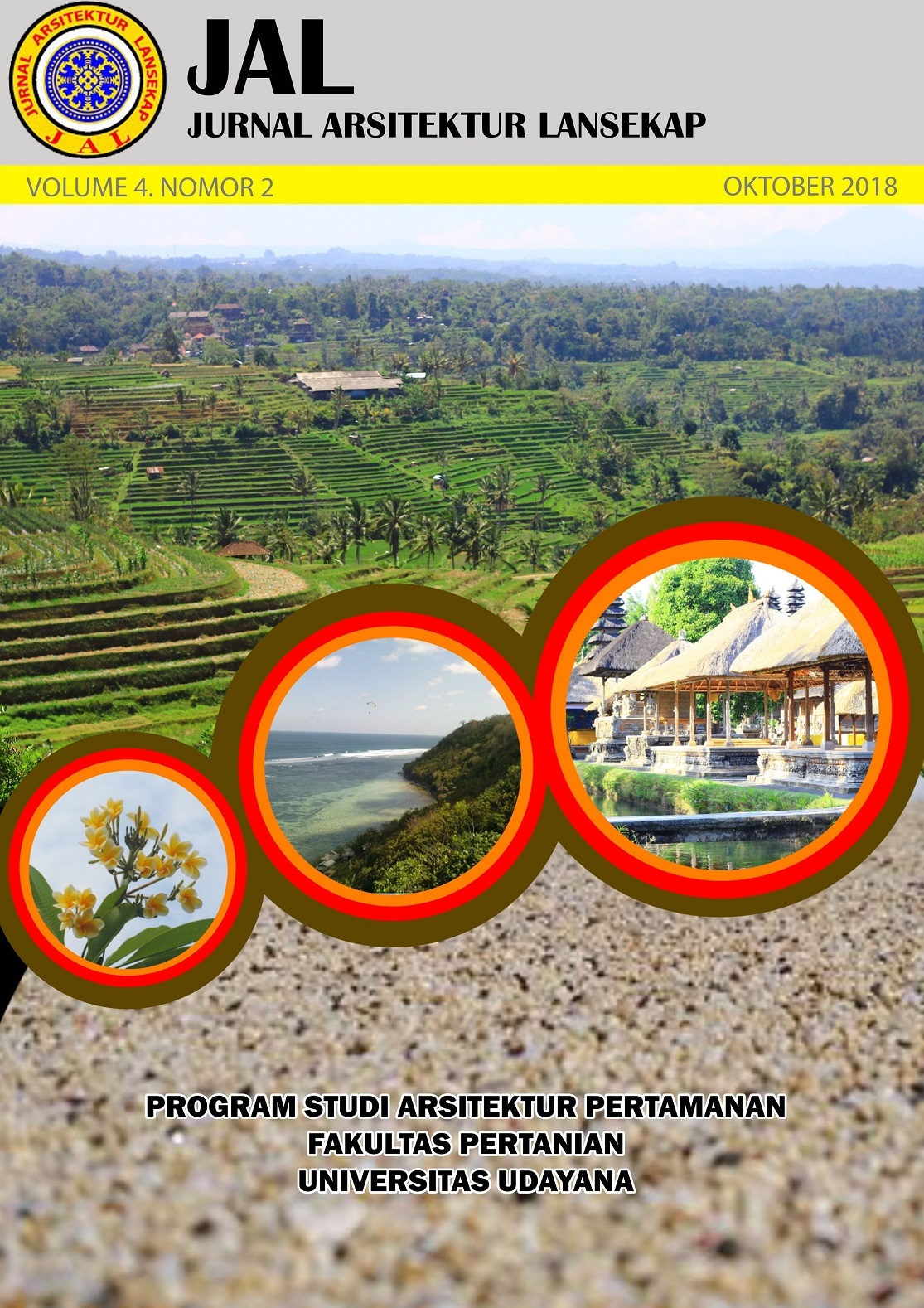Tata letak tanaman pada rumah berkonsep arsitektur tradisional Bali di Kota Bangli, Kabupaten Bangli Provinsi Bali
Abstract
The plants layout on Balinese traditional architecture concept houses in Bangli City, Bangli Regency, Bali Province. Bangli Regency is one of the regency that located in the central part of Bali island and only one of regency do not have sea. Balinese Traditional Architecture can be interpreted as the spatial from the life place of Balinese community that has developed through generations with all the rules are inherited from ancient times, until the development of a form with the physical characteristics are revealed on the Lontar Asta Kosala-Kosali. The traditional Balinese park is not only involved the architectural, functional, aesthetic, but also used Balinese cultural philosophy in every placement of it landscape components. The purpose of this research were to understand the effect of land to the application Balinese Traditional Architecture, to understand the concept are using on development house in the city of Bangli regency and then to know how the sense of Balinese traditional architecture on the houses in Bangli city, Bangli regency. The result of the study was that the land area is very influential on the implementation of Traditional Balinese Architecture because there are rules that should be applied that is Asta Kosala-Kosali, the concept applied is Tri Hita Karana, Tri Mandala dan Tri Angga. Plants layout on Balinese people’s knowing is very less, so in plant layouting people only accentuate the aesthetic without a Balinese cultural philosophy.
Downloads
An author who publishes in the Jurnal Arsitektur Lansekap (JAL) agrees to the following terms:
- Author retains the copyright and grants the journal the right of first publication of the work simultaneously licensed under the Creative Commons Attribution-ShareAlike 4.0 License that allows others to share the work with an acknowledgement of the work's authorship and initial publication in this journal
- Author is able to enter into separate, additional contractual arrangements for the non-exclusive distribution of the journal's published version of the work (e.g., post it to an institutional repository or publish it in a book) with the acknowledgement of its initial publication in this journal.
- Author is permitted and encouraged to post his/her work online (e.g., in institutional repositories or on their website) prior to and during the submission process, as it can lead to productive exchanges, as well as earlier and greater citation of the published work (See The Effect of Open Access).
Read more about the Creative Commons Attribution-ShareAlike 4.0 Licence here: https://creativecommons.org/licenses/by-sa/4.0/.







